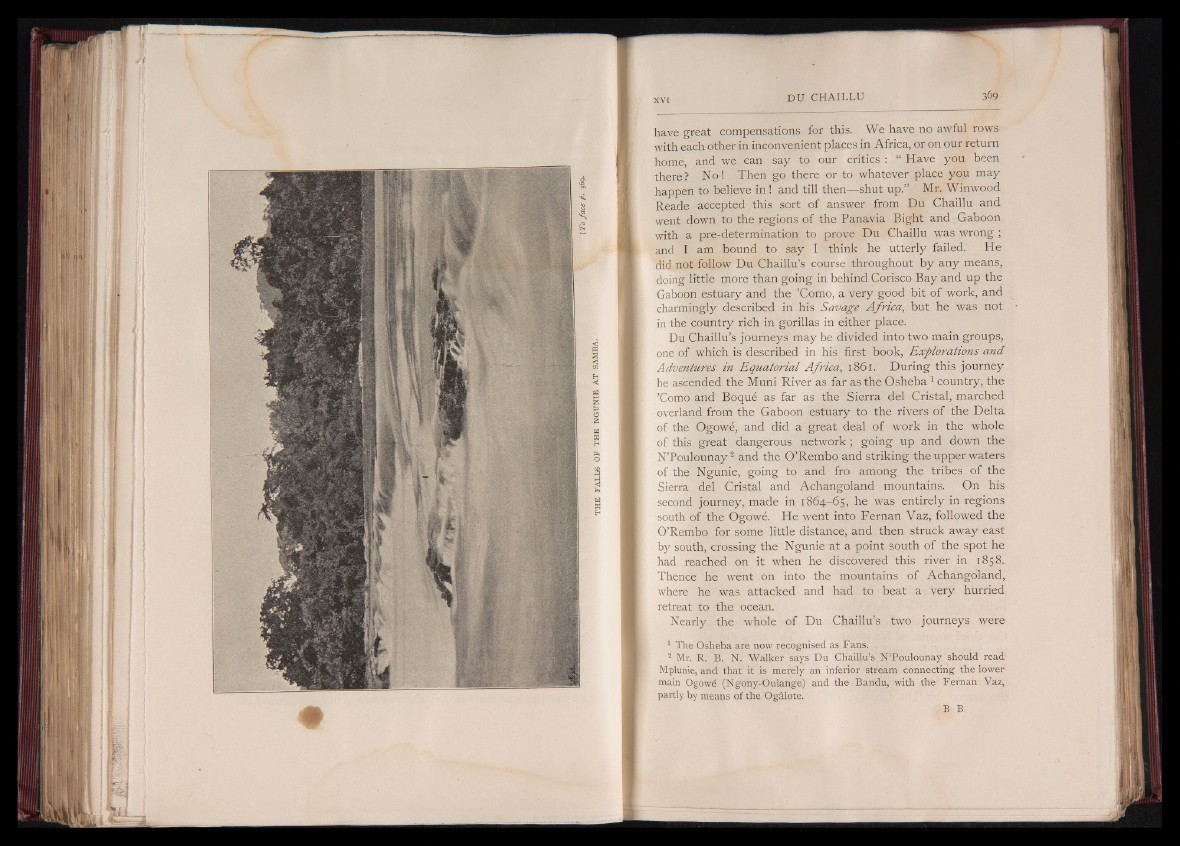
THE FALLS OF THE NGUNIE AT SAMBA.
have great compensations for this. We have no awful rows
with each other in inconvenient places in Africa, or on our return
home, and we can say to our critics : “ Have you been
there ? N o ! Then go there or to whatever place you may
happen to believe in ! and till then— shut up.” Mr. Winwood
Reade accepted this sort of answer from Du Chaillu and
went down to the regions of the Panavia Bight and Gaboon
with a pre-determination to prove Du Chaillu was wrong ;
and I am bound to say I think he utterly failed. He
did not follow Du Chaillu’s course throughout by any means,
doing little more than going in behind Corisco Bay and up the
Gaboon estuary and the ’Como, a very good bit of work, and
charmingly described in his Savage Africa, but he was not
in the country rich in gorillas in either place.
Du Chaillu’s journeys may be divided into two main groups,
one of which is described in his first book, Explorations and
Adventures in Equatorial Africa, 1861. During this journey
he ascended the Muni River as far as the Osheba1 country, the
’Como and Boque as far as the Sierra del Cristal, marched
overland from the Gaboon estuary to the rivers of the Delta
of the Ogowe, and did a great deal of work in the whole
of this great dangerous network; going up and down the
N’Poulounay 2 and the O’Rembo and striking the upper waters
of the Ngunie, going to and fro among the tribes of the
Sierra del Cristal and Achangoland mountains. On his
second journey, made in 1864-65, he was entirely in regions
south of the Ogowd. He went into Fernan Vaz, followed the
O’Rembo for some little distance, and then struck away east
by south, crossing the Ngunie at a point south of the spot he
had reached on it when he discovered this river in 1858.
Thence he went on into the mountains of Achangoland,
where he was attacked and had to beat a very hurried
retreat to the ocean.
Nearly the whole of Du Chaillu’s two journeys were
1 The Osheba are now recognised as Fans. ,
2 Mr. R. B. N. Walker says Du Chaillu’s N’Poulounay should read'
Mplunie, and that it is merely an inferior stream connecting the lower
main Ogowd (Ngony-Oulange) and the Baridu, with the Feman Vaz,
partly by means of the Ogstlote.
. B B